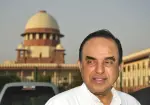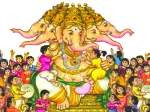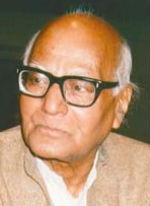
 Not many seem to have noticed a subtle but clear shift in the narrative. On November 8, we were told that this historic step was taken to cleanse the system of black money. None can complain, even if it means short-term pain. On December 16, we are told that digitisation should be the new way of life. Strangely, black money or its removal is no longer dominating the discourse. – G. S. Vasu
Not many seem to have noticed a subtle but clear shift in the narrative. On November 8, we were told that this historic step was taken to cleanse the system of black money. None can complain, even if it means short-term pain. On December 16, we are told that digitisation should be the new way of life. Strangely, black money or its removal is no longer dominating the discourse. – G. S. Vasu
Journalists are often accused of looking at the wrong end of the stick. More so in the case of demonetisation, because it is the most profound public policy, impacting almost the entire population in the post-Independence era.
We cannot think of any other policy which had such a huge impact, positive or negative. And, therefore, the continuing debate on the pros and cons. That the government keeps pushing the deadline to ease the post-demonetisation currency crisis even after a month is, in my view, not the big issue, despite it having inconvenienced a significant section of the population. What is now reasonably clear is that the main objective—attacking black money—may not be achieved. It is still early to assess the impact on two other stated purposes: arresting terror (by flushing out counterfeit notes) and Naxalite activities. On November 8, we were told that there was approximately Rs 14.2 lakh crore in the form of Rs 500 and Rs 1000 notes in the system, and it was widely expected that at least 20 per cent of it would never make its way back.
On Thursday, the Supreme Court was informed that the banking system has already got back Rs 13 lakh crore, with two more weeks to go. However well-intentioned the prime minister’s intentions may have been, the raids, arrests and large-scale seizure of new currency suggests that the system has helped exactly those who were expected to take the hit. The revelation though is that we now have a new set of thieves—some bankers—added to those already existing and ably aiding the tax evaders and hoarders. I was perplexed when some bankers told me about how this was managed: Assuming 3,000 genuine customers each exchanged Rs 4,000 per day by producing a copy of their Aadhaar card, the same would be photocopied multiple times by bankers and used to accept wads of invalid currency from those they intended to benefit and in turn give them new notes. Ingenuity at its best! That brings us to the fundamental question. Forget the pre-poll promise of getting back black money stashed abroad. Let’s do a value vs volume analysis.
Assuming 20 per cent of the currency within the country was black, it was plain that it existed with just about 0.5 per cent of the population. In any given city, one could ask anyone in the enforcement and investigative machinery of the government and they would reel out the names of the suspects. Was it beyond the power of the government to have targeted them? Alternatively, if the tax machinery was so inefficient that it could not track 0.5 per cent of the hoarders, would it now be possible to scan almost every bank account and hand out a certificate of honesty? A section of corrupt government officials and some profit-making companies apart, how is black money otherwise generated? As one global expert on economics put it, in a country where a five per cent commission on any project has become a norm, it is parties in power that thrive on it to keep their machinery going and pass on a part of it as “bribe” to voters at the time of elections.
Therefore, without addressing the core reasons—by revoking discretionary powers vested with ministers and babus, or bringing about political reforms— the benefits of any move of this nature could be limited. How well the prime minister negotiates the impact of demonetisation on the economy and the concurrent measures he initiates to get the desired results shall determine the fallout. Amidst the political slugfest and currency crisis management, not many seem to have noticed a subtle but clear shift in the narrative. On November 8, we were told that this historic step was taken to cleanse the system of black money. None can complain, even if it means short-term pain. On December 16, we are told that digitisation should be the new way of life. Strangely, black money or its removal is no longer dominating the discourse. – The New Indian Express, 17 December 2016
» G. S. Vasu is the Editor-in-Chief of The New Indian Express, Chennai.
Filed under: india | Tagged: black money, currency exchange, demonetisation, digitisation, india, narendra modi, plastic money, RBI | 3 Comments »


























